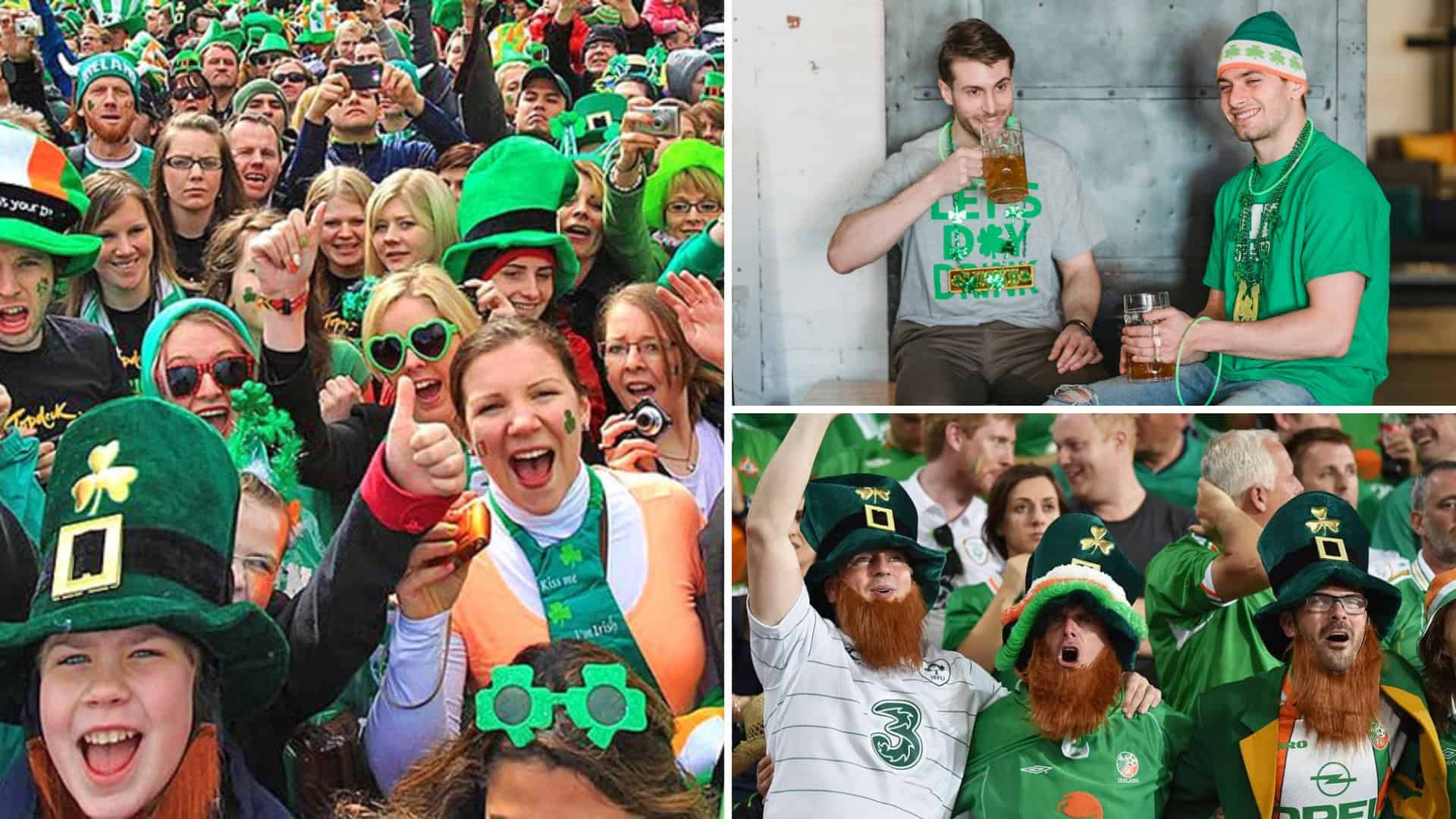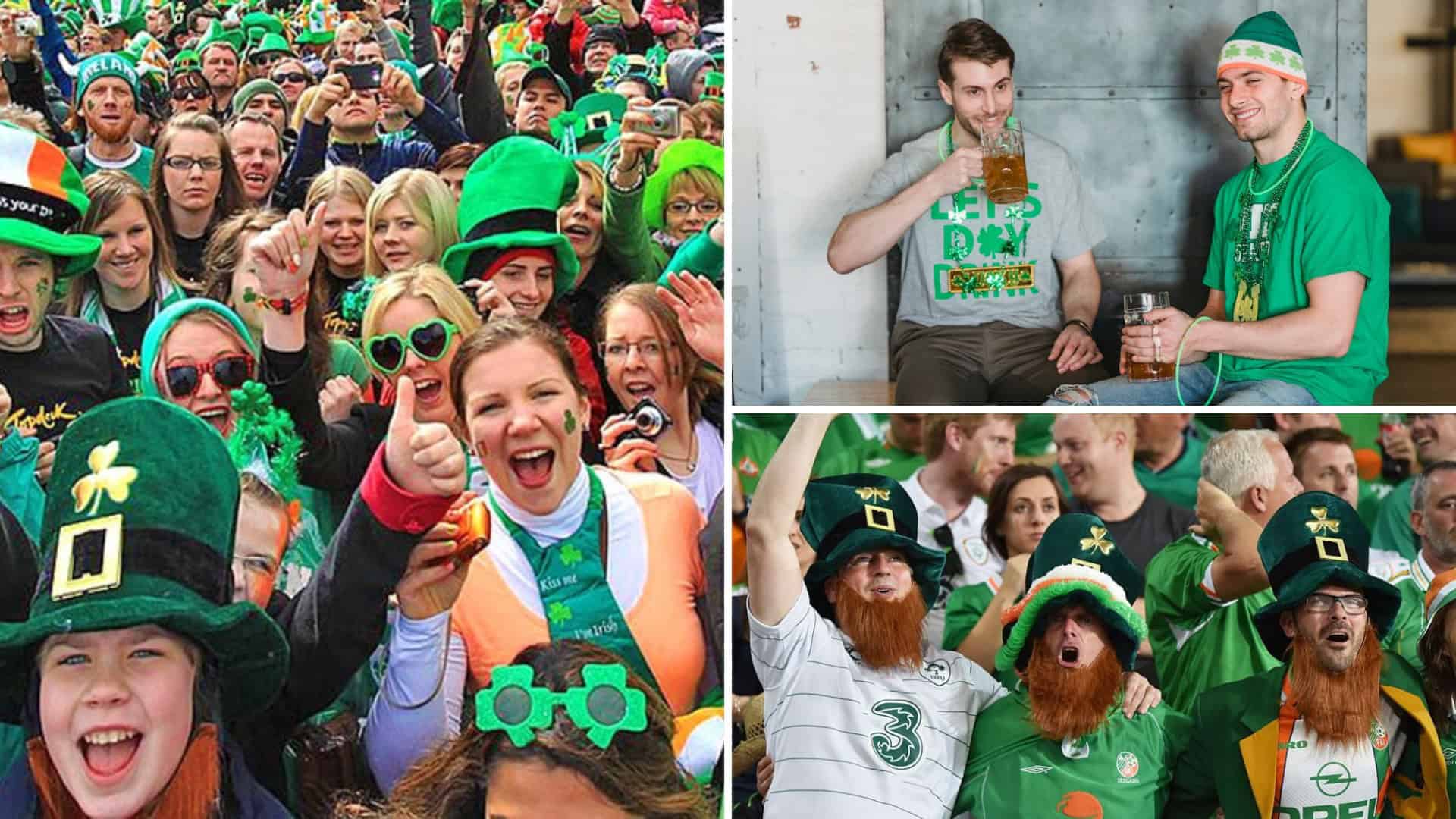
Ireland. The very name conjures images of rolling green hills, ancient castles whispering tales of yore, lively pubs echoing with traditional music, and a people renowned for their warmth, wit, and resilience.
But beyond the romantic stereotypes lies a rich tapestry of history, culture, and identity. This ultimate guide delves deep into the heart of the Irish, answering your burning questions and offering a comprehensive understanding of this captivating nation and its people.
From their linguistic heritage to their historical struggles, their cultural expressions to their modern identity, we’ll embark on a journey to unravel the enigmas of the Emerald Isle. Whether you’re planning a visit, tracing your ancestry, or simply curious about the Irish spirit, prepare to be enchanted and informed.
Is Irish a Language? Unpacking the Linguistic Heritage
Let’s start with a fundamental question: Is Irish a language? The resounding answer is yes. Irish, also known as Gaeilge (pronounced “GAYL-juh”), is a Celtic language belonging to the Goidelic branch. It boasts a history stretching back millennia, making it one of the oldest living languages in Europe.
For centuries, Irish was the primary language spoken across the island. However, with the arrival of English and subsequent political and social shifts, its dominance gradually waned. Despite facing periods of suppression, Irish has persevered and remains a vital part of Irish identity.
Today, Irish is recognized as the first official language of Ireland and an official language of the European Union. While English is the language of everyday communication for most of the population, efforts are continuously underway to revitalize and promote the use of Irish. You’ll encounter it on road signs, official documents, and hear it spoken in Gaeltacht (Irish-speaking) regions, primarily located along the western seaboard.
Learning a few basic Irish phrases like “Dia dhuit” (hello), “Sláinte” (cheers), or “Go raibh maith agat” (thank you) is a wonderful way to connect with the culture and show your appreciation for this ancient tongue.
Is Irish Spring Antibacterial? Decoding a Household Name
Moving from language to a household name: Is Irish Spring antibacterial? While the name evokes a sense of freshness and perhaps even cleanliness, the primary function of Irish Spring soap is typically cleansing rather than specifically antibacterial.
Irish Spring is a popular brand of deodorant soap known for its distinctive scent and lather. While some variations might contain antibacterial ingredients, it’s crucial to check the specific product label for confirmation. Generally, most standard Irish Spring soaps are designed to wash away dirt and germs through their surfactant action, rather than actively killing bacteria.
If you’re looking for a soap with antibacterial properties, it’s always best to check the packaging for clear indications and active antibacterial ingredients.
When Irish Eyes Are Smiling: Unveiling the Sentiment and the Song
The phrase “When Irish Eyes Are Smiling” is deeply ingrained in popular culture as an expression of Irish joy, warmth, and good cheer. It evokes a sense of heartfelt happiness and the welcoming nature often associated with the Irish people.
But beyond the sentiment, there’s a specific origin to this iconic phrase: it’s the title of a beloved song.
When Irish Eyes Are Smiling Lyrics: Tracing the Words of a Classic
The lyrics of “When Irish Eyes Are Smiling” paint a picture of love, happiness, and the captivating allure of Irish eyes. While variations exist, the most well-known version typically includes these lines:
When Irish eyes are smiling, Sure they steal your heart away. When Irish eyes are beaming, They shine like stars of Killarney’s day. When Irish lips are praying, To mother dear above, Sure they whisper don’t you stray, From those who truly love.
And when Irish hearts are happy, All the world seems bright and gay, And when Irish eyes are smiling, They’ll steal your heart away. 1
1. www.chickensmoothie.com
These lyrics capture the romanticized image of the Irish, emphasizing their charm, devotion, and the joy they bring to those around them.
When Irish Eyes Are Smiling Song: The Melody Behind the Magic
The song “When Irish Eyes Are Smiling” was written by Chauncey Olcott and George Graff Jr., with music composed by Ernest R. Ball. It was first performed in the 1913 Broadway musical “Shameen Dhu.”
Despite its enduring association with Irish culture, it’s interesting to note that none of the songwriters were actually Irish. Chauncey Olcott, however, was an American actor and singer who became famous for playing Irish characters on stage, contributing significantly to the popularization of Irish themes in American entertainment.
The song’s sentimental melody and heartfelt lyrics resonated deeply with audiences, particularly Irish immigrants in America who longed for their homeland. It quickly became a standard in Irish-American culture and remains a beloved tune associated with St. Patrick’s Day and celebrations of Irish heritage worldwide.
Are Irish Anglo Saxon? Delving into Ancestry and Origins
Now, let’s delve into the question of ancestry: Are Irish Anglo Saxon? The answer is definitively no. The Irish and the Anglo-Saxons are distinct ethnic and cultural groups with separate origins and histories.
The Irish are primarily of Celtic descent. Their ancestors arrived in Ireland thousands of years ago, with various waves of migration contributing to the island’s early population. Celtic culture flourished in Ireland, leaving behind a rich legacy of language, mythology, art, and social structures.
The Anglo-Saxons, on the other hand, were Germanic peoples who migrated to Britain (present-day England) starting in the 5th century AD. They established their own kingdoms and cultures, eventually forming the basis of the English identity.
While there have been historical interactions and some intermingling between the populations of Ireland and Britain over centuries, the core ancestry of the Irish remains Celtic, distinct from the Anglo-Saxon heritage of the English.
Are Irish Catholic? Exploring Religion and Identity
The question “Are Irish Catholic?” touches upon a significant aspect of Irish history and identity. Historically, Catholicism has played a profound role in shaping Irish society and culture. For centuries, particularly during periods of British rule and discrimination, Catholicism became a central element of Irish identity and a source of resistance.
Today, while Ireland has undergone significant secularization, a substantial portion of the population still identifies as Catholic. However, it’s crucial to avoid generalizations. Ireland is a diverse society with a growing number of people identifying with other religions or no religion.
The influence of the Catholic Church in Ireland has decreased in recent decades, and social attitudes have become more liberal. Nevertheless, its historical impact remains undeniable, evident in cultural traditions, social norms, and even the landscape with its numerous churches and religious sites.
Therefore, while a significant portion of Irish people are Catholic, it’s inaccurate to assume that all Irish people are Catholic. Religious affiliation is a personal matter, and Ireland today embraces a wider spectrum of beliefs.
Are Irish People British? Navigating National Identity
The question “Are Irish people British?” is a sensitive one, deeply intertwined with centuries of complex and often tumultuous history. The clear and unequivocal answer is no. Irish people are not British. They are citizens of the Republic of Ireland, an independent sovereign state.
The island of Ireland was historically under British rule for centuries. However, after a long struggle for independence, the majority of the island gained independence in the early 20th century, forming the Irish Free State, which later became the Republic of Ireland.
Northern Ireland, a separate region on the island, remains part of the United Kingdom. Therefore, people born and residing in Northern Ireland hold British citizenship, although many also identify as Irish or Northern Irish.
It’s essential to respect the distinct national identity of the people of the Republic of Ireland. Referring to them as British can be offensive and ignores their hard-won independence and unique cultural heritage.
Are Irish People Celtic? Tracing Ancient Roots
Finally, let’s return to the ancient roots of the Irish: Are Irish people Celtic? The answer is a resounding yes. The Irish are considered one of the six modern Celtic nations, along with Scotland, Wales, Brittany, Cornwall, and the Isle of Man.
Their language (Irish or Gaeilge) is a Celtic language, their culture is steeped in Celtic traditions, and their history is deeply intertwined with the broader Celtic world. From ancient myths and legends to traditional music and art, the Celtic heritage is a vibrant and enduring aspect of Irish identity.
Archaeological evidence reveals the presence of Celtic culture in Ireland dating back thousands of years. The arrival of Celtic languages and customs shaped the island’s social structures, artistic expressions, and spiritual beliefs. This Celtic legacy continues to be celebrated and preserved in modern Ireland.
Beyond the FAQs: Unveiling the Richness of Irish Culture
While these frequently asked questions provide a foundational understanding, the essence of the Irish people lies in their rich and multifaceted culture. Here are some key aspects that contribute to the unique Irish identity:
Warmth and Hospitality (Céad Míle Fáilte): The Irish are renowned for their welcoming nature and hospitality. The phrase “céad míle fáilte” (a hundred thousand welcomes) is more than just a saying; it reflects a genuine openness and generosity towards visitors.
Storytelling and Wit: The Irish have a long and celebrated tradition of storytelling. From ancient epics to witty anecdotes shared in pubs, the art of narrative is deeply ingrained in their culture. Their quick wit and sense of humor are legendary, making conversations engaging and often filled with laughter.
Music and Dance: Traditional Irish music is vibrant and infectious, characterized by instruments like the fiddle, tin whistle, accordion, and bodhrán. Lively sessions in pubs are a cornerstone of Irish social life. Irish dance, with its intricate footwork and energetic rhythms, is another captivating cultural expression.
Literature and Poetry: Ireland has produced a wealth of literary giants, including Nobel laureates like W.B. Yeats, Samuel Beckett, Seamus Heaney, and George Bernard Shaw. Their contributions to poetry, drama, and prose have enriched world literature, often exploring themes of identity, history, and the human condition.
Strong Sense of Community: Despite increasing modernization, a strong sense of community remains important in Ireland, particularly in rural areas. Family ties are often close, and neighbors tend to support each other.
Resilience and Spirit: Throughout their history, the Irish people have faced numerous challenges, including famine, emigration, and political struggles. Their resilience, spirit, and ability to find humor even in adversity are defining characteristics.
Love of Sport: Sport plays a significant role in Irish life. Gaelic football and hurling, unique to Ireland, are passionately followed, alongside rugby and soccer. Sporting events often evoke a strong sense of national pride and unity.
Conclusion: Embracing the Complexity and Charm of the Irish
The Irish people are far more than just leprechauns and pots of gold. They are a nation with a deep history, a vibrant culture, a resilient spirit, and a warm heart. From the ancient echoes of the Irish language to the lively strains of traditional music, from the complexities of their political history to the simple joy of a shared story, the Irish identity is a rich tapestry woven from centuries of experience.
By understanding their linguistic heritage, their historical struggles, their cultural expressions, and their evolving identity, we can move beyond stereotypes and appreciate the true depth and charm of the Irish people.
So, the next time you hear “When Irish Eyes Are Smiling,” remember the sentiment behind the song, the history that shaped the nation, and the enduring spirit of the people of the Emerald Isle. They are a people who have contributed immensely to the world and continue to captivate with their unique blend of tradition and modernity.







